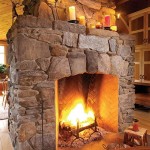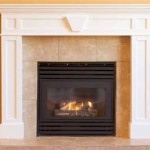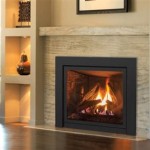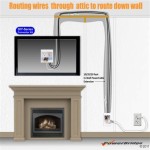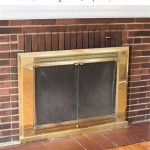Fireplace Wood Carriers: A Comprehensive Guide
Fireplace wood carriers are essential tools for anyone who relies on a wood-burning fireplace, stove, or outdoor fire pit. They provide a convenient and efficient method for transporting firewood from the woodpile to the fireside, minimizing mess and strain. The selection of an appropriate wood carrier involves considering various factors such as material, capacity, design, and user preference. This article delves into the different aspects of fireplace wood carriers, aiming to provide a comprehensive understanding of their types, benefits, and selection criteria.
Types of Fireplace Wood Carriers
Fireplace wood carriers are available in a diverse range of designs and materials, each offering unique advantages and disadvantages. Understanding the different types is crucial for choosing a carrier that aligns with specific needs and usage patterns.
Canvas Carriers: Canvas wood carriers are among the most popular and widely used options. They typically feature a durable canvas material, often reinforced with stitching and handles. Canvas carriers are lightweight, foldable for easy storage, and relatively inexpensive. They are suitable for carrying moderate loads of firewood and are a good choice for occasional users.
Leather Carriers: Leather wood carriers offer a more premium and aesthetically pleasing option. Leather is a durable and flexible material that can withstand the rigors of carrying firewood. Leather carriers are often more expensive than canvas carriers but offer a longer lifespan and a more sophisticated look. They are suitable for users who prioritize both functionality and aesthetics.
Metal Frame Carriers: Metal frame wood carriers provide a more structured and robust solution for transporting firewood. These carriers typically feature a metal frame with a canvas or fabric lining. The frame provides added stability and support, making them suitable for carrying heavier loads of firewood. Metal frame carriers may be less foldable than canvas carriers but offer greater durability and load-bearing capacity.
Rolling Wood Carts: Rolling wood carts represent a larger-scale solution for moving significant quantities of firewood. These carts typically feature a sturdy metal frame with wheels, allowing users to easily transport heavy loads of wood across various terrains. Rolling wood carts are ideal for users who need to move firewood from distant woodpiles or for those with physical limitations that make carrying heavy loads difficult.
Wood Carrier Bags: Wood carrier bags are typically made from durable fabric and designed to be carried over the shoulder or by hand. They offer a convenient and compact solution for transporting smaller amounts of firewood. Wood carrier bags are often preferred by users who have limited storage space or who only need to carry a small amount of wood at a time.
Split Leather Carriers: Split leather carriers are a cost-effective alternative to full-grain leather carriers. They are made from the underside of the hide, making them more affordable while still offering decent durability. While they may not be as long-lasting or aesthetically pleasing as full-grain leather, they can be a suitable option for budget-conscious buyers.
The choice of material often dictates the price, durability, and aesthetic appeal of the wood carrier. Consideration should be given to the frequency of use, the weight of the wood being carried, and the desired aesthetic.
Benefits of Using a Fireplace Wood Carrier
Employing a fireplace wood carrier offers several significant advantages over manually carrying logs, enhancing both efficiency and safety during firewood management.
Reduced Mess and Debris: One of the primary benefits of using a wood carrier is the reduction of mess and debris inside the home. Carrying firewood by hand often results in bark, dirt, and wood chips being tracked indoors. A wood carrier contains these loose materials, keeping the floors and carpets cleaner. This translates to less time spent cleaning and a more hygienic environment.
Improved Ergonomics and Reduced Strain: Carrying heavy loads of firewood can place significant strain on the back, arms, and shoulders. A wood carrier distributes the weight more evenly and provides a more comfortable grip, reducing the risk of injury. This is especially important for individuals who frequently carry firewood or who have pre-existing back problems. The ergonomic design of many carriers promotes better posture and reduces the likelihood of muscle strain.
Increased Efficiency: A wood carrier allows users to transport larger quantities of firewood in a single trip, reducing the number of trips required to replenish the fireside wood supply. This saves time and effort, especially during cold weather when frequent trips to the woodpile can be uncomfortable. The increased efficiency can be particularly beneficial for users who rely heavily on wood for heating their homes.
Enhanced Safety: Carrying firewood by hand can be hazardous, especially on uneven or slippery surfaces. A wood carrier provides a more secure grip and reduces the risk of dropping wood, which can cause injury. The structured design of some carriers also prevents wood from shifting or falling out, further enhancing safety. This is especially crucial for users who need to navigate stairs or other obstacles while carrying firewood.
Protection of Clothing: Firewood can be dirty and abrasive, and carrying it by hand can damage clothing. A wood carrier acts as a barrier between the wood and clothing, preventing stains, tears, and snags. This helps to keep clothes clean and in good condition, especially when handling freshly cut or dirty firewood.
The cumulative effect of these benefits makes fireplace wood carriers a valuable investment for anyone who uses firewood regularly. They contribute to a cleaner, safer, and more efficient firewood management process.
Factors to Consider When Selecting a Wood Carrier
Choosing the right fireplace wood carrier involves evaluating several key factors to ensure it meets individual needs and preferences. These factors include capacity, durability, handle design, storage considerations, and price.
Capacity: The capacity of a wood carrier refers to the amount of firewood it can hold. The appropriate capacity depends on the frequency of use, the size of the fireplace or stove, and the user's physical strength. Users who burn wood frequently or have large fireplaces should opt for carriers with larger capacities. Conversely, users who only burn wood occasionally or have smaller fireplaces can choose carriers with smaller capacities. Consider the typical size of the logs being carried as well.
Durability: Durability is a critical factor, especially for users who plan to use the wood carrier frequently or carry heavy loads. Look for carriers made from high-quality materials such as heavy-duty canvas, thick leather, or sturdy metal frames. Reinforced stitching and durable hardware are also indicators of a well-constructed carrier. Consider the potential for wear and tear based on the intended usage environment.
Handle Design: The handle design of a wood carrier significantly impacts its comfort and ease of use. Look for carriers with comfortable, ergonomic handles that provide a secure grip. Padded handles can reduce strain on the hands and wrists, especially when carrying heavy loads. The length and placement of the handles should also be considered to ensure a balanced and comfortable carrying position.
Storage Considerations: Storage space is an important consideration, especially for users with limited storage space. Many canvas and fabric wood carriers can be folded or rolled up for compact storage when not in use. Metal frame carriers and rolling wood carts typically require more storage space. Consider the availability of storage space before making a purchase.
Price: Fireplace wood carriers are available at a wide range of price points. The price typically reflects the quality of materials, the complexity of the design, and the brand reputation. While it is important to stay within budget, investing in a higher-quality carrier can often be more cost-effective in the long run due to its increased durability and longevity. Consider the total cost of ownership, including potential replacement costs, when making a decision.
Construction Quality: Examine the stitching, seams, and hardware of the carrier. Look for reinforced areas, especially around the handles and stress points. High-quality construction indicates that the carrier is built to withstand the rigors of regular use.
Ease of Cleaning: Consider how easy it is to clean the carrier. Canvas and nylon carriers can often be wiped down or hosed off, while leather carriers may require more specialized cleaning products. A carrier that is easy to clean will help to maintain its appearance and prevent the build-up of dirt and debris.
By carefully considering these factors, users can select a fireplace wood carrier that meets their specific needs and provides years of reliable service. The right carrier will make firewood management a more efficient, safe, and enjoyable task.

Industrial Fireplace Log Holder Pottery Barn Firewood Tools Rustic Wood Furniture

Firewood Racks Log Holders Pottery Barn

Frame Indoor Outdoor Log Holder Reviews Crate Barrel

Give Your Fireplace An Instant Upgrade With These Firewood Holders Storage Indoor Rack

Firewood Rack Indoor Fireplace Log Holder Outdoor Wood Storage Decorative Heavy Duty Steel Carrier Stove Bracket Stacking And Fire Pit Line Yahoo Ping

Large Canvas Firewood Carrier Log Tote Bag Indoor Fireplace Holders Woodpile Rack Fire Wood Carrying Outdoor Tubular Birchwood Stan Fruugo De

40 Inch Round Iron Decorative Fireplace Firewood Rack Log Carrier Indo Diamond Home

Outsunny 24 Firewood Log Rack Fireplace Holder Stylish Wood Storage Basket Carrier For Outdoor And Indoor Use Black Aosom

Log Storage Rack Indoor Fireplace Wood Home Decor

Large Canvas Log Handler Bag Waterproof Fireplace Wood Storage Inner And Outer Frame Wax Holder With Padding Strip Brown Fruugo De
Related Posts

